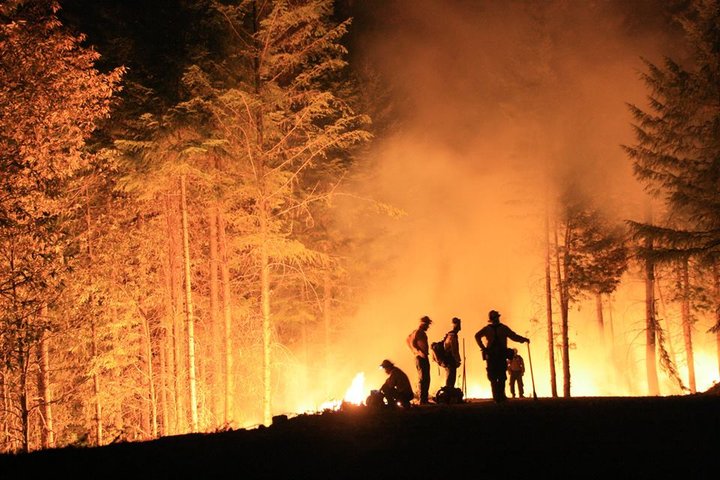
File photo: US Forest Service.
###
Gov. Gavin Newsom’s office has released his promised wildfire response, proposing to hold utilities more accountable for their actions, establish a fund for fire victims and overhaul the state’s utility regulator.
The proposals, with details to be fleshed out in legislation, are as sweeping and politically combustible as California fires themselves. Newsom wants to clearly define what constitutes reasonable and safe utility operations, flipping the standard of proof to a presumption of innocence in determining how to compensate victims; squeeze utilities to pay more for safety measures; and even tie executive compensation to companies’ safety records.
The state law that assigns liability to a utility if its equipment sparks a wildfire will stay in place. That law determines whether a utility owes a fire victim money. A new “prudent manager” standard would determine whether that victim is paid by the utility’s investors or by a rate increase on its customers.
Much of what the state is currently considering is meant to settle Wall Street’s nerves in the wake of Pacific Gas and Electric’s bankruptcy filing and to preserve the financial solvency of San Diego Gas & Electric and Southern California Edison, which have been warned by national credit agencies that their ratings may be downgraded, making it more expensive to borrow money.
Legislators and the governor’s staff have been working furiously to craft policies that walk a political tightrope: slapping utility company wrists for starting blazes, but doing so without inflicting undue financial damage; assuring Californians that there is no utility bailout; and taking actions that don’t punish fire victims or further burden electricity customers.
The proposals would:
- Establish a $21 billion-dollar claims fund using money from an existing state fund and utility companies. The pool would allow utilities to pay victims quickly, without waiting for an official determination of responsibility.
- Define the “prudent operator” benchmark for reasonable and safe operations, to provide clarity for companies and their investors.
- Adopt a separate standard that would shift the burden of proving utilities’ wrongdoing to fire victims.
- Significantly expand the responsibilities of the Public Utilities Commission, creating a Wildfire Safety Division with the expertise to assess utilities’ plans for preventing fires.
The goal is to have legislation enacted by July 12, the date that ratings agencies have set for their decisions. It is unclear which lawmakers will carry the administration’s policies in bill form or what the final legislation may look like.
“We think this will be well received,” said an administration official. “We think this provides a path to stabilize our two utilities that are facing potential downgrades and provides a path out of bankruptcy for PG&E.”
But Loretta Lynch, a former Public Utilities Commission president, said she was alarmed that the state is considering shifting the legal burden of proving fault in wildfires to victims and ratepayers.
“That’s like saying that Goliath wins, unless David can beat him ,” Lynch said.
The utility regulator was singled out by the Newsom administration as overdue for reform. Newsom’s staff said the speed of the commission’s deliberations must accelerate and emphasize safety and customer protection.
The commission’s new division would issue safety certifications that all utilities would have to obtain. The three large utilities would be required to invest $3 billion in fire prevention and safety over the next three years.
The proposals — in many ways a response to PG&E’s poor safety record — would bar the state’s largest utility from the compensation fund until it emerges from bankruptcy and fully resolves liability claims from fires in 2017-2018. The utility would have 18 months to sort out its legal and financial obligations.
As always with sweeping proposals, a raft of details need to be hashed out.
For example, the precise compensation fund mechanism is not yet determined. One suggestion is for a “liquidity” fund that allows utilities to draw money quickly to pay claims that exceed their insurance coverage. They would have to repay what they withdraw under some circumstances.
A second option would be an “insurance” fund. In this case, even if a company was determined to have acted imprudently, it would be required to repay the fund only up to its insurance limit, which could be 40-50% of total damages.
SDG&E and Edison would have a matter of weeks to decide which mechanism they prefer. The state will only operate one fund, so the two companies must agree. An administration official said that if the companies don’t agree, the liquidity fund would be chosen by default.
###
CALmatters.org is a nonprofit, nonpartisan media venture explaining California policies and politics.
CLICK TO MANAGE